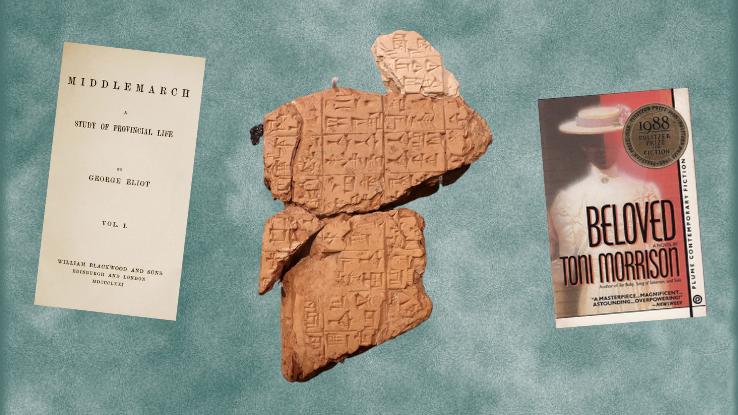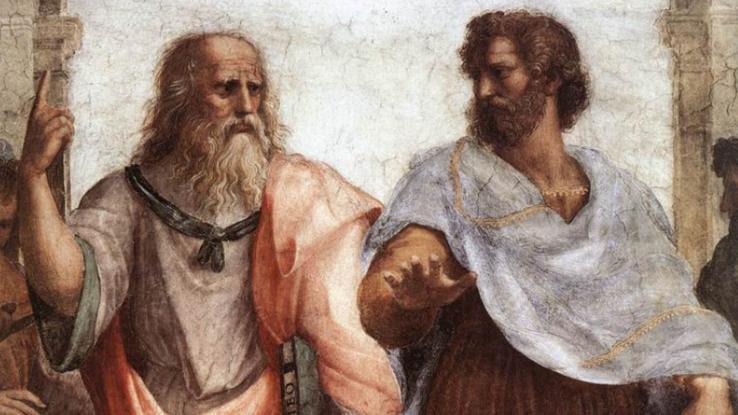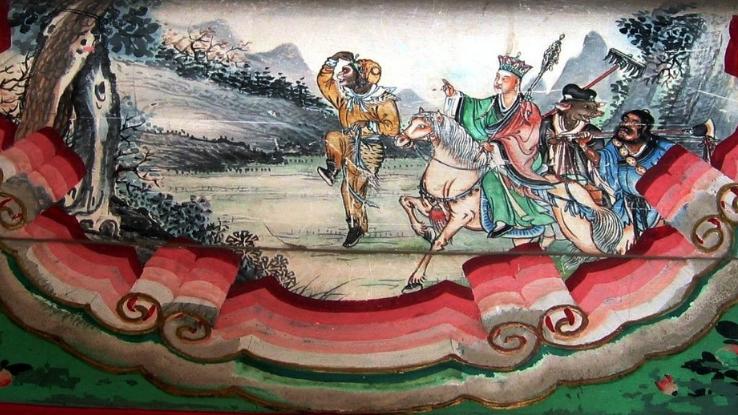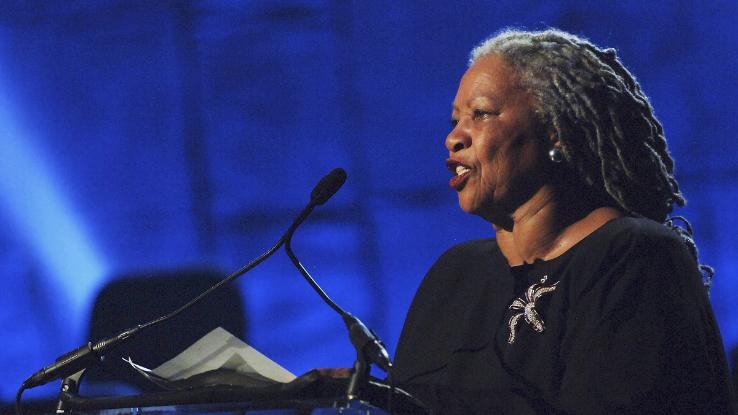How To Add A Case Study Into An Essay

For many folks, the discussion "literature" conjures upwards memories of loftier schoolhouse English language form reading lists. While the Western literary canon is expanding to include, and elevate, stories exterior of what white, Western readers have dubbed "the classics," there are still some works that ingather upwards in every student's career, from Frankenstein and the Epic of Gilgamesh to Beloved and The Bully Gatsby. So, why is literature important — and why do we study it?
Merriam-Webster defines literature equally poetry or prose that has "excellence of class or expression and expressing ideas of permanent or universal interest." While it may sound trite to say, the world's greatest works of literature have changed minds, sparked rebellions, and helped to modify the class of history. While it would be impossible to contain all of literature's contributions and multitudes here, we're going to have a wait at some of the landmark moments in this art form's history.
Literature Transports Us To the Past
Like other recovered art objects, literature has the power to tell united states of america well-nigh ancient civilizations. Not but can we understand their customs, values and lives, but we tin get a meliorate idea of what their entertainment looked like. The commencement-known examples of literature tin be traced back to ancient Mesopotamia. Around 3400 BCE, the Sumerians developed a system of writing called cuneiform, which immune scribes to tape myths, hymns and poesy. Some of these earliest-known transcriptions include the "Kesh Temple Hymn" and the "Instructions of Shuruppak," both of which were written around 2500 BCE.

The Epic of Gilgamesh, a long-form Mesopotamian verse form, was originally written around 2100 BCE. Even today, Gilgamesh is considered the get-go great masterpiece of world literature. In fact, much of the Bible parallels this aboriginal piece of work, furthering emphasizing only how universal and influential Gilgamesh was — and continues to be today.
In 375 BCE, Plato, the Athenian philosopher, authored The Republic, a dialogue betwixt Socrates and his fellow Greek thinkers, which explores thought-provoking questions about justice, social club and the simply man. And, effectually the eighth century BCE, the landmark epics attributed to the poet Homer, The Odyssey and The Iliad, helped preserve Greek mythology and history in writing.
Early on, literature was independent within verse and dramatic works — after all, performing plays was some other not bad source of entertainment. During the 11th century, or the Heian period, Japanese noblewoman and lady-in-waiting Murasaki Shikibu penned The Tale of Genji, which is considered the showtime modern novel past many scholars.

Years afterwards, in Europe, things started to shift in a meaningful style in the wake of Geoffrey Chaucer'southward The Canterbury Tales, a drove of 24 stories written in Middle English between 1387 and 1400. Picking upwards the prose torch effectually 1485, Thomas Malory published Le Morte d'Arthur, one of the first novels in the Western canon. During the Renaissance, writers similar Molière began satirizing everything from the church and government to society at large, showing that written works had the propensity to shift the balance of ability and make people rethink their world views.
During the 16th century, also known every bit the Ming dynasty, the Chinese novel Journey to the West was published. Attributed to Wu Cheng'en, this satire- and allegory-filled work is considered one of the Four Great Classical Novels of Chinese literature. Around the same time, William Shakespeare was helping to lay the foundations of modern English and arts and crafts the literary tropes and story formats we still enjoy today. And, of form, in 1615 Miguel de Cervantes penned Don Quixote, a romantic, archetypal novel that'southward considered 1 of the well-nigh influential works of all fourth dimension.
Literature Gives Folks a Vocalism and Platform — and Allow's Readers Come across Themselves Reflected
Once more, information technology'due south impossible to fully encapsulate the latitude of literary history here. Moreover, this article focuses on written works, just it's important to notation that many cultures and groups of people record stories through imagery instead — or laissez passer their stories downwards in oral traditions. All of this to say, our view of literature is a narrow one, and, in many ways, limited by the mode educational institutions have shaped our agreement of what works are important.

James Simpson, caput of Harvard University's English Department, spoke about these limitations direct in an open letter of the alphabet to the Wall Street Journal entitled "Great Literature Magnifies Repressed Voices, E'er." For Simpson, the ages-old Western literary canon, which highlights the literary contributions of white (and oftentimes straight) men, "betray[south] the fundamental office of literature and other art forms, which is to hear the voices repressed by official forms of a given civilisation."
Of course, the literary catechism has been refreshed in past, which proves that it's important to reshape and rethink the stories nosotros deem essential. For case, at the time of its writing Nathaniel Hawthorne's The Cerise Letter of the alphabet was kind of the scandalous (hands consumable) HBO-like story of the day. But, at present, it'due south largely considered a probing, essential work — not just amusement. In the wake of World War I, authors like Virginia Woolf and F. Scott Fitzgerald penned novels, like Mrs. Dalloway and The Great Gatsby respectively, that captured their disillusionment beginning and foremost. Notwithstanding, these continue to be must-read works due to the way they exemplify arts and crafts and storytelling elements. (At least in part.)
More modern literature too ushered in the more formal notion of literary sub-genres, ranging from scientific discipline fiction — a genre created by Frankenstein author Mary Shelley — to romance, fantasy, and realism. By retracing certain tropes, conventions and graphic symbol types, genre helps us sympathize the way item stories are shaped by categorizing them.
Without a doubt, literature helps united states uncover — be it an uncovering of the past, a present cocky, or a possible futurity. The most distinguished literary greats, like Toni Morrison, Alice Walker, Margaret Atwood, James Baldwin, Kazuo Ishiguro, Chinua Achebe, Jhumpa Lahiri, Gabriel Garcia Marquez, Zadie Smith, and Maggie Nelson (and many, many more folks we don't have the space to proper name!), capture all of these facets. In brusque, by climbing into the minds of other characters and worlds — in stepping outside of ourselves — literature allows us to understand universal truths; modify minds; stir empathy; and express our identities and values in lasting, far-reaching means.
How To Add A Case Study Into An Essay,
Source: https://www.reference.com/world-view/importance-literature-society-1a66a3cd21a90dd8?utm_content=params%3Ao%3D740005%26ad%3DdirN%26qo%3DserpIndex&ueid=12f1b851-8bdd-4dc4-ab1b-ae5b1dc01320
Posted by: mccollisteraloortat.blogspot.com


0 Response to "How To Add A Case Study Into An Essay"
Post a Comment